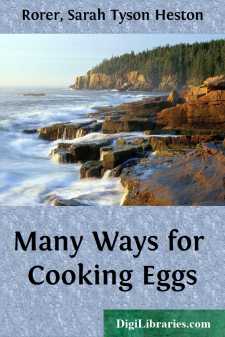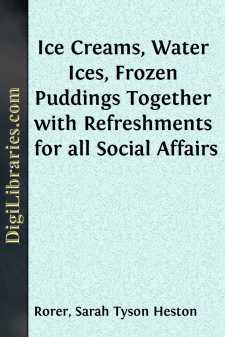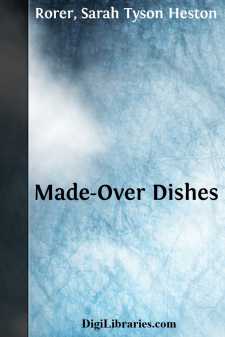Categories
- Antiques & Collectibles 13
- Architecture 36
- Art 48
- Bibles 22
- Biography & Autobiography 813
- Body, Mind & Spirit 142
- Business & Economics 28
- Children's Books 17
- Children's Fiction 14
- Computers 4
- Cooking 94
- Crafts & Hobbies 4
- Drama 346
- Education 46
- Family & Relationships 57
- Fiction 11829
- Games 19
- Gardening 17
- Health & Fitness 34
- History 1377
- House & Home 1
- Humor 147
- Juvenile Fiction 1873
- Juvenile Nonfiction 202
- Language Arts & Disciplines 88
- Law 16
- Literary Collections 686
- Literary Criticism 179
- Mathematics 13
- Medical 41
- Music 40
- Nature 179
- Non-Classifiable 1768
- Performing Arts 7
- Periodicals 1453
- Philosophy 64
- Photography 2
- Poetry 896
- Political Science 203
- Psychology 42
- Reference 154
- Religion 513
- Science 126
- Self-Help 84
- Social Science 81
- Sports & Recreation 34
- Study Aids 3
- Technology & Engineering 59
- Transportation 23
- Travel 463
- True Crime 29
Sarah Tyson Heston Rorer
Sarah Tyson Heston Rorer (1849–1937) was a pioneering American nutritionist, writer, and educator, often regarded as the first dietitian in the United States. She was the author of numerous cookbooks and a popular lecturer on the topic of healthy eating, promoting the idea that food should be both nutritious and delicious. Rorer's influential works include "Mrs. Rorer's New Cook Book" and "How to Cook Vegetables," which helped shape modern cooking and dietary habits. She also founded the Philadelphia Cooking School and wrote extensively for popular magazines, contributing to the rise of home economics as a field.
Author's Books:
Sort by:
SAUCES The philosophy of a sauce, when understood, enables even an untrained cook to make a great variety of every day sauces from materials usually found in every household; to have them uniform, however, flavorings must be correctly blended, and measurements must be rigidly observed. Two level tablespoonfuls of butter or other fat, two level tablespoonfuls of flour, must be used to each half pint of...
more...
PHILADELPHIA ICE CREAMS BURNT ALMOND ICE CREAM 1 quart of cream 1/2 pound of sugar 4 ounces of sweet almonds 1 tablespoonful of caramel 1 teaspoonful of vanilla extract 4 tablespoonfuls of sherry Shell, blanch and roast the almonds until they are a golden brown, then grate them. Put half the cream and all the sugar over the fire in a double boiler....
more...
COOKED FISH Canapés Cold boiled fish makes excellent canapés. To each half pint of fish allow six squares of toasted bread. If you have any cold boiled potatoes left over, add milk to them, make them hot and put them into a pastry bag. Decorate the edge of the toast with these mashed potatoes, using a small star tube; put them back in the oven until light brown. Make the fish into a creamed fish. Rub...
more...
SANDWICHES Sandwiches may be made from one of three or four kinds of bread; whole wheat bread, Boston brown or oatmeal bread, white bread and rye bread made into square, deep loaves; in fact, all bread used for sandwiches should be made especially for the purpose, so that the slices may be in good form, and sufficiently large to cut into fancy shapes. The butter may be used plain, slightly softened or...
more...





